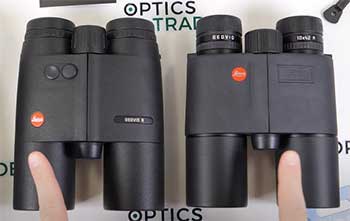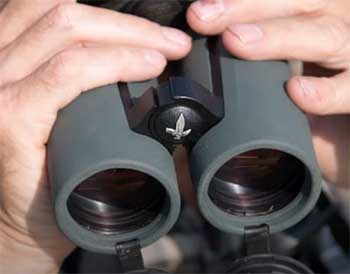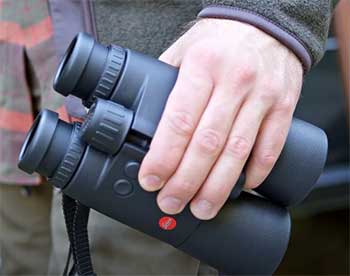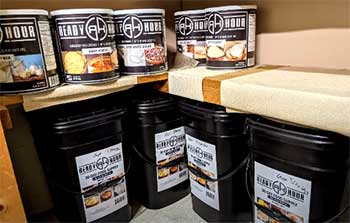Binoculars are an essential tool for bird watchers, nature enthusiasts, hunters, and sports spectators. When it comes to premium binocular brands, Leica and Swarovski stand out as two of the best.
But which is better for birding and nature viewing – Leica or Swarovski?
In this comprehensive guide, we’ll compare Leica and Swarovski binocular features, image quality, durability, and price to help you decide which brand is right for you.
A Brief Comparison Table
| Features | Leica Binoculars | Swarovski Binoculars |
| Optical Quality | Very sharp edge-to-edge | Excellent light transmission |
| Durability | Rugged metal alloy housing | Lighter plastic housing |
| Field of View | Wider FOV from 330ft to 380ft | Narrower FOV from 305ft to 374ft |
| Close Focus | As close as 6.5ft | Around 9ft to 13ft |
| Price | $2,000 to $2,800 | $1,600 to $2,300 |
Overview Of Leica And Swarovski Binoculars

Leica and Swarovski are both premium German optics brands with long histories of producing high-quality lenses and optical instruments.
Leica was founded in 1849 and is well-known for their cameras and lenses.
They produce binoculars designed for nature observation, hunting, sports, and outdoor activities.
Leica binoculars are known for their sharpness, edge-to-edge clarity, and durable construction.
Swarovski was founded in 1895 and initially specialized in creating lead glass crystals. They began producing binoculars and spotting scopes in the 1920s, and today offer both hunting and birding optics.
Swarovski optics are renowned for their light transmission, brightness, and color fidelity.
Both companies produce binoculars using extra-low dispersion (ED) glass elements to reduce chromatic aberration and enhance resolution. They also coat lens surfaces with proprietary multi-coatings to increase light transmission and create brighter, higher-contrast images.
When it comes to binocular specifications, Leica and Swarovski are fairly comparable:
- Magnifications from 8x to 15x
- Objective lens sizes from 25mm to 50mm+
- Field of view from 344ft to 1911ft at 1000 yards
- Close focus distances from 6.5ft to 13ft
- Weight from 21oz to 65oz
So on paper, Leica and Swarovski binoculars share similar specs tailored for birding, nature viewing, hunting, and outdoor sports. But how do they compare in real-world performance and features?
Key Differences Between Leica And Swarovski Binoculars
- Optical Quality and Image Performance

The most important factor in choosing binoculars is optical clarity and image quality.
Both Leica and Swarovski produce very sharp, high-contrast images with true-to-life color reproduction.
However, there are some subtle differences.
Leica binoculars are renowned for edge-to-edge sharpness.
Even in lower light conditions, images remain crisp across the entire field of view with no blurriness around the edges.
Leica’s apochromatic (APO) lenses minimize color fringing and provide high-contrast images rich in detail.
Swarovski optics excel at light transmission thanks to their proprietary lens coatings. Swarovski binoculars let in more light, allowing for very bright, vivid images even in low light dusk and dawn conditions. They also produce very true-to-life color reproduction.
For activating fast-moving birds and wildlife, Leica’s edge-to-edge sharpness has an advantage. But for glassing in lower light, Swarovski’s brightness is hard to beat.
Both produce excellent image quality. It’s difficult to declare one better optically. Leica may have a slight edge for crispness while Swarovski shines for brightness.
- Durability and Ruggedness
Birding binoculars need to stand up to frequent use outdoors. Durability is important if you plan to take your binoculars hiking, traveling, or on safari.
When it comes to ruggedness, Leica binoculars have the edge. Their magnesium and aluminum housing is lightweight while still protecting the internal optics. Leica bins are nitrogen purged and O-ring sealed to be waterproof and fogproof in all conditions.
Swarovski binoculars prioritize lightweight design over ruggedness. Their housings are made of lighter-weight plastics instead of metal alloys. While still waterproof and fogproof, they may not hold up to repeated bumps and drops as well as Leica models.
For active birding in demanding environments, Leica is the safer choice for a durable binocular. But for travel and causal nature viewing, Swarovski’s lighter build may be beneficial.
- Field of View and Close Focus

The field of view (FOV) determines how wide or narrow your viewing angle is through the binoculars.
A wide FOV is preferable for scanning open landscapes and tracking moving animals.
Close focus determines how near you can view subjects.
Leica binoculars tend to have a wider FOV compared to Swarovski.
Their 10×42 models have FOVs around 330ft to 380ft at 1000 yards, giving you a broader perspective.
Leica’s close focus is also slightly shorter at 6.5-9ft, letting you view flowers, butterflies, and other nearby subjects.
Swarovski binocular FOVs range from 305ft to 374ft. Still wide, but narrower than equivalent Leica models. The close focus is around 9-13ft. Respectable, but not quite as close as Leica.
If you prioritize wide, immersive views and close focus flexibility, Leica may be the better choice. But Swarovski still provides ample FOV and focus range for most birding.
- Price and Value
Given the quality and features, both Leica and Swarovski binoculars command premium prices. But Swarovski models cost significantly less:
- Leica 10×42 Binoculars – $2,000 to $2,800
- Swarovski 10×42 Binoculars – $1,600 to $2,300
While both are considered luxury optics, Swarovski provides comparable quality at a more affordable price point. The price difference can be $500+ between similar models.
For the best value, Swarovski gets the edge. You still get excellent German glass and optics for hundreds less than Leica models. However, for no-compromise quality, avid birders may prefer investing in Leica regardless of cost.
Which Is Better For Birding – Leica Or Swarovski?
For birding and nature viewing, both Leica and Swarovski perform excellently. Choosing between them comes down to personal preference and priorities:
Leica wins for sharpness across the entire field of view. The rugged build also gives confidence when hiking and traveling. Leica is ideal for active birders who want crisp views and durability.

Swarovski shines for their optical brightness and vivid color fidelity.
They also provide similar quality for less cost. Swarovski suits casual birders and an overall better value.
For hardcore birders willing to pay more for optics, Leica gets the nod.
But Swarovski is no compromise for those wanting premium quality at a more affordable price.
It’s hard to declare one brand objectively “better” overall.
Test binoculars from both brands yourself to see which excels for your eyes. They are both phenomenal options guaranteed to give years of spectacular birding and nature viewing.
Also Read: Is Vortex Better Than Celestron Binocular?
Leica And Swarovski Binoculars FAQ
It’s hard to say one brand is objectively “better” – both Leica and Swarovski make exceptional binoculars. Swarovski provides brighter optics at a more affordable price. But Leica edges out Swarovski for absolute edge-to-edge sharpness and durability. For most birders, either brand will provide outstanding optical quality.
Swarovski is regarded as one of the very best binocular brands, but “the best” is subjective. Swarovski excels at light transmission and has excellent quality control. However, other premium brands like Leica, Zeiss, and Nikon also make stellar binoculars that can match or beat Swarovski in certain areas. For brightness and color accuracy, Swarovski is hard to top.
Leica and Zeiss are extremely close competitors known for crisp sharpness and color fidelity. Zeiss has a reputation for greater durability and value. Leica is lighter weight and has a slight edge for absolute clarity and close focus. Overall optical performance is so close that it comes down to personal preference. Serious birders would be happy with either brand.
Swarovski binoculars demand a premium price, but most birding experts agree they are worth the investment. While expensive, they deliver excellent brightness, true color reproduction, and clarity that compete with any binoculars. Swarovski’s quality control is also impeccable. For birders who use their optics extensively, Swarovski’s quality and lifetime warranty justify the higher cost.
Final Thoughts
When choosing between Leica and Swarovski, there are strong cases to be made for both brands. Optically they both deliver crystal clear views ideal for birding and nature observation. Leica edges out for sharpness while Swarovski excels for brightness and value.
Think about your needs and budget to decide which brand’s strengths fit your style of birding. Try out both models to see which gives you the visual experience you prefer.
Either Leica or Swarovski are guaranteed to provide a lifetime of spectacular views and unmatched optical enjoyment out in the field.


